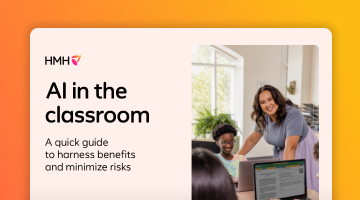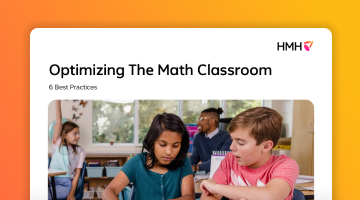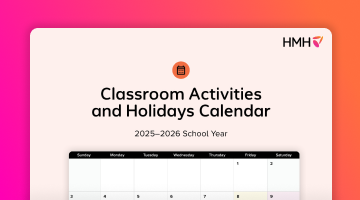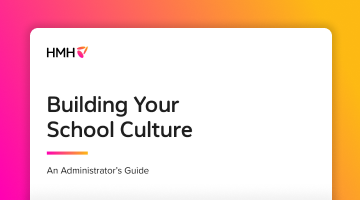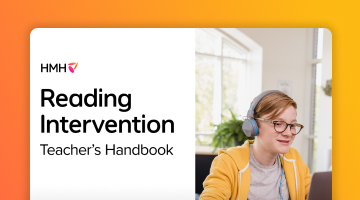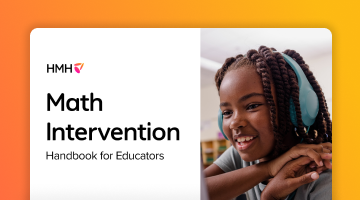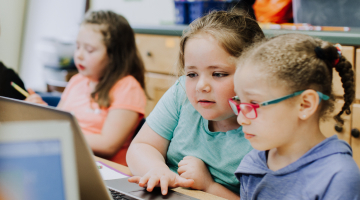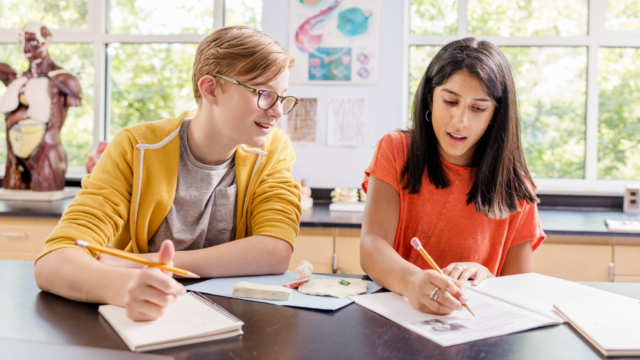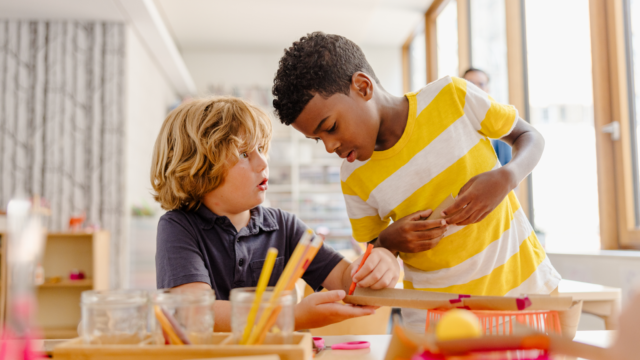
Dr. Martin Luther King, Jr. (or simply, MLK) is perhaps best known for his “I Have a Dream” speech delivered during the March on Washington on August 28, 1963. However, Dr. King was more than his memorable speeches. A pivotal leader during the American civil rights movement, Dr. King was also passionate about eliminating poverty. Dr. King and the Southern Christian Leadership Conference announced the Poor People’s Campaign at the end of 1967 and began organizing a protest in Washington, D.C. Though Dr. King wasn’t able to see his plans realized, the Poor People’s Campaign continued. The following HISTORY® video provides insight into the Poor People’s Campaign after the assassination of MLK.
Dr. King’s “I Have a Dream” speech and the Poor People’s Campaign are just two of his many accomplishments. How do you introduce your students to the life and work of Dr. Martin Luther King, Jr.? With such an enormous legacy, it can be a daunting task to properly honor Dr. King, his contributions to the civil rights movement, and his significance in American history and culture. So, we pulled together some Dr. Martin Luther King, Jr. project ideas and activities for the classroom.
Martin Luther King, Jr. Day Activities
1. Make a Timeline
To put the work of MLK into perspective for students, create a timeline of major moments in his life. Assign student teams specific moments in Dr. King’s life to research. Each team can then present their event to the class in chronological order, forming a human timeline along the way. Some key moments to include are:
- 1955: Montgomery Bus Boycott, resulting in the U.S. Supreme Court ruling that racial segregation in transportation was unconstitutional
- 1957: Dr. King elected president of the Southern Christian Leadership Conference
- 1963: Nonviolent campaign aimed at Birmingham, Alabama, including the “Letter from a Birmingham Jail”
- 1963: The March on Washington for Jobs and Freedom and “I Have a Dream” speech
- 1964: Dr. King won the Nobel Peace Prize at 35 years old, the youngest person to ever receive the honor
- 1964: Congress passed the landmark Civil Rights Act
- 1965: Selma to Montgomery March for Voting Rights in Alabama
- 1965: Congress passed the Voting Rights Act
- 1967: Poor People’s Campaign announced
- 1968: Dr. Martin Luther King, Jr. was tragically assassinated at the Lorraine Motel in Memphis, Tennessee
2. Deliver Speeches
Listen to the “I Have a Dream” speech and encourage dialogue amongst students about Dr. King’s platform of nonviolence and peace. Consider how his path of nonviolence can still improve our world today. Then, ask students to think about their dreams for the future. How do they want to see the world improve? After time for reflection, have students write and present their own versions of the iconic speech.
3. "Make Dreams a Reality" Collage
If delivering “dream” speeches isn’t your class style, another entry point to teaching the “I Have a Dream” speech is with a sentence prompt. Before you start this activity, have a discussion with your class about the world problems they have noticed. Are there issues they care about? You can give them some examples that help their local community such as preventing littering and keeping their community clean or global examples such as protecting endangered animals. With these in mind, give your students the following sentence prompts: “I have a dream that ______” and “I can make my dream come true by ______”. These prompts can help students think like Dr. King and come up with ways they can help make the world a better place. Turn the dreams into a reality by having students trace their hands on paper. Cut out the handprints, write their dreams down on the hands, and arrange them into a beautiful collage of dreams.
4. Write Your Own Hopeful Poem
Take inspiration from Dr. King’s poetic “I Have a Dream” speech and have students write a hopeful poem. Encourage them to try different formats like a haiku, a rap, or even an absurdist poem.
Start with a haiku poem—a Japanese form of poetry that is only three lines long. It follows a 5/7/5 syllable pattern, where the first and last lines are 5 syllables, and the second is 7 syllables. They don't need to rhyme, but writing one will challenge your students to be succinct.
5. Start a Quote Discussion
Help students put a quote by Dr. Martin Luther King, Jr. in historical context. After choosing a quote to analyze, they can consider these questions: What do the words mean to them? Why did he say this? Are his words still relevant today? Why or why not? Download the Quote Discussion Chart to help students gather their thoughts.

6. Volunteer in Your School or Community
One of Dr. King’s most famous quotes is, “Life’s most persistent and urgent question is, ‘What are you doing for others?’” Ask this question to your class and brainstorm ways to help others. Consider big and small ways your class can help in the community, as a group, and as individuals. School project ideas for helping out could be cleaning up a communal space, partnering up with another grade for tutoring moments, or organizing a food drive.
7. Virtual tour of Martin Luther King, Jr National Historical Park
Atlanta, Georgia is the birthplace of Dr. King and is now the home of Martin Luther King, Jr. National Historical Park. Dr. King’s memory and legacy has been beautifully preserved in the exhibits, monuments, and museums that guide you through the history of the civil rights movement.
Key places to feature:
- Visitor Center: Guests usually start at the visitor center where exhibits such as “Children of Courage,” “Courage to Lead,” “Freedom Road,” and “D.R.E.A.M. Gallery” teach guests about the civil rights movement.
- Behold Monument: Dedicated to MLK by his wife, Coretta Scott King, this monument inspires those who fight for dignity, social justice, and human rights.
- “I Have a Dream” World Peace Rose Garden: Located outside of the visitor center near the graves of Dr. and Mrs. King, this garden is meant to represent the ideals of peace through nonviolence while honoring the national flower, a rose.
- Birth home: The birth home that Dr. King spent his first twelve years of his life showcases what his early life was like as well as immerses visitors into the time period. You can find narrated videos walking through the birth home on the National Park website.
- Fire Station No. 6: Once serving the Auburn Avenue neighborhood where the King family lived, this station is now dedicated to showcasing the early history of Atlanta’s fire department during 1920s and 1930s.
- Historic Ebenezer Baptist Church: This church has a long history. It is where Dr. King was baptized and ordained as a minister. It was also where his funeral was held.
- The King Center: The King Center is the final resting place of Dr. and Mrs. King but is also home to the “Eternal Flame,” “Coretta Scott King Peace and Mediation Garden”, and the exhibit “Freedom Hall” that honors Dr. King, Rosa Parks, and Mahatma Gandhi.
There is a wealth of information to plan your virtual tour from the national parks website to the King Center. You can find a virtual tour here or enter the Coretta Scott King Rose Gallery right from your classroom. For more tips on how to plan a virtual tour, visit our blog “How to Create a Virtual Field Trip for Students That Engages and Delights.”
8. Walk in Dr. King's footsteps
Martin Luther King, Jr. once said, “faith is taking the first step even when you can’t see the whole staircase.” This quote is just one of the many ways he inspired others to walk in his footsteps and it’s a great way to start this activity.
You can print out silhouettes of shoes or, for a more personal touch, trace the outline of your students’ shoes. Have each student write on the shoe’s outline how they can walk in Dr. King’s footsteps.
Here are some prompts to get them started:
- I can change the world by…
- What is something you can do that would make Dr. King happy?
- What is one kind thing you can do to help someone?
You can tape them down in your classroom or dream bigger and get more classes involved so that the entire hallway is filled with messages inspired by Dr. King.
More MLK Project Ideas and Resources
Other resources and more information to help teach Dr. King in the classroom include:
- The Martin Luther King, Jr. Research and Education Institute at Stanford University
- The King Center
- The New York Times archive of MLK content
- The Seattle Times MLK project
- “3 MLK Day Activities for Families” on Shaped
- “MLK Day Bulletin Board Ideas” on Shaped
***
Find more classroom resources and activities on Shaped.
This blog, originally published in 2019, has been updated for 2024.
HISTORY is a trademark of A&E Television Networks LLC. All rights reserved.
Download our FREE calendar of activities!

